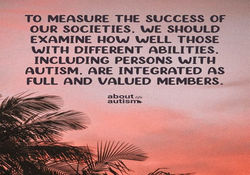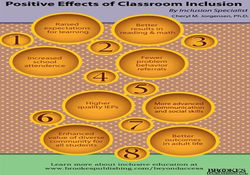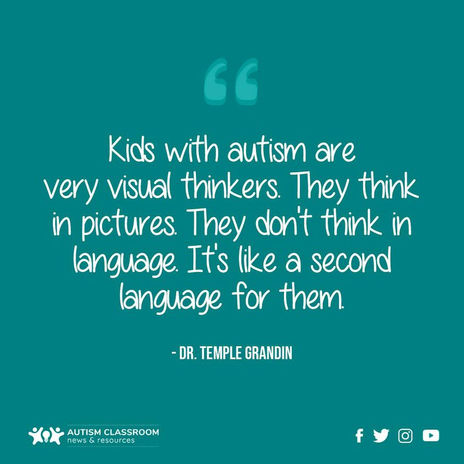
Empathy - The ability to understand and share the feelings of another.
SCHOOL
-
They often have “splinter skills” (example: gifted writer but unable to write his gifted thoughts down).
-
These children may have difficulties understanding intuitively.
-
They may struggle with focusing on task, may get easily distracted or may be unclear on what they are supposed to focus on.
-
It can be quite difficult for them to multi-task.
-
They generally need step by step directions.
-
Large assignments need to be broken down into small parts with very specific guidelines (written or typed, how many pages, paragraphs, how do you want it written, what are your specific expectations).
-
Visual aids are most helpful.
ACADEMICS
-
They generally display an average to above average intelligence but lack the awareness and comprehension skills of their neurotypical peers.
-
While they have the intelligence to join in regular education, they often do not have the emotional resources to cope with all of the demands in that classroom.
-
They tend to get easily stressed and overwhelmed by their rigid thinking and/or needs. They can often can get self-critical and prone to depression if they are unable to attain teacher expectations.
-
The teacher needs to be calm, predictable, and matter-of-fact. Their tone of voice may affect the child due to heightened sensory sensitivity.
-
Teachers and/or clinicians often get blinded by the academic strengths of these children and forget to attend to their neurologically-based weaknesses.
-
Make sure he is learning to generalize all lessons. Put it in writing so that it is concrete.
-
Sometimes they tend to get lost and confused unless you teach "the parts before the whole".
-
They tend to be literal and concrete thinkers. They love facts and figures. Computers are generally quite enjoyable and understandable.
-
Abstractions, like metaphors, irony, jokes, emotional nuances, relationship issues, etc. may be difficult to comprehend.
-
Very real difficulty understanding "Theory of mind".
-
Problem solving skills tend to be quite poor.

ASD (Autism Spectrum Disorder) is a neurological disorder which makes it very difficulty to teach a child in the conventional way. The experts note that the key to understanding autism spectrum disorders is to recognize that it profoundly alters how these kids perceive their world. The following are suggestions for teachers and parents to help their child succeed. Every child is different, therefore these ideas are only given in the broadest sense. It is up to you to tailor these ideas to the individual child you are working with.




Look carefully at this homework assignment, completed by a child with autism. Their literal interpretation of directions becomes clear when we understand what the child's struggles really are.

Tests and questionnaire's for people with autism need to be written in a very direct manner, Examples to solutions can be extremely helpful as well, like having apple written at the start of this particular assignment.








 |  |  |
|---|---|---|
 |  |  |
 |  |  |
 |  |  |
 |  |  |
 |  |  |
 |  |  |
INCLUSION




















School Sensory Memory Game
Click a picture to start the game. The object of the game is to collect matching pictures by clicking one right after another.
































